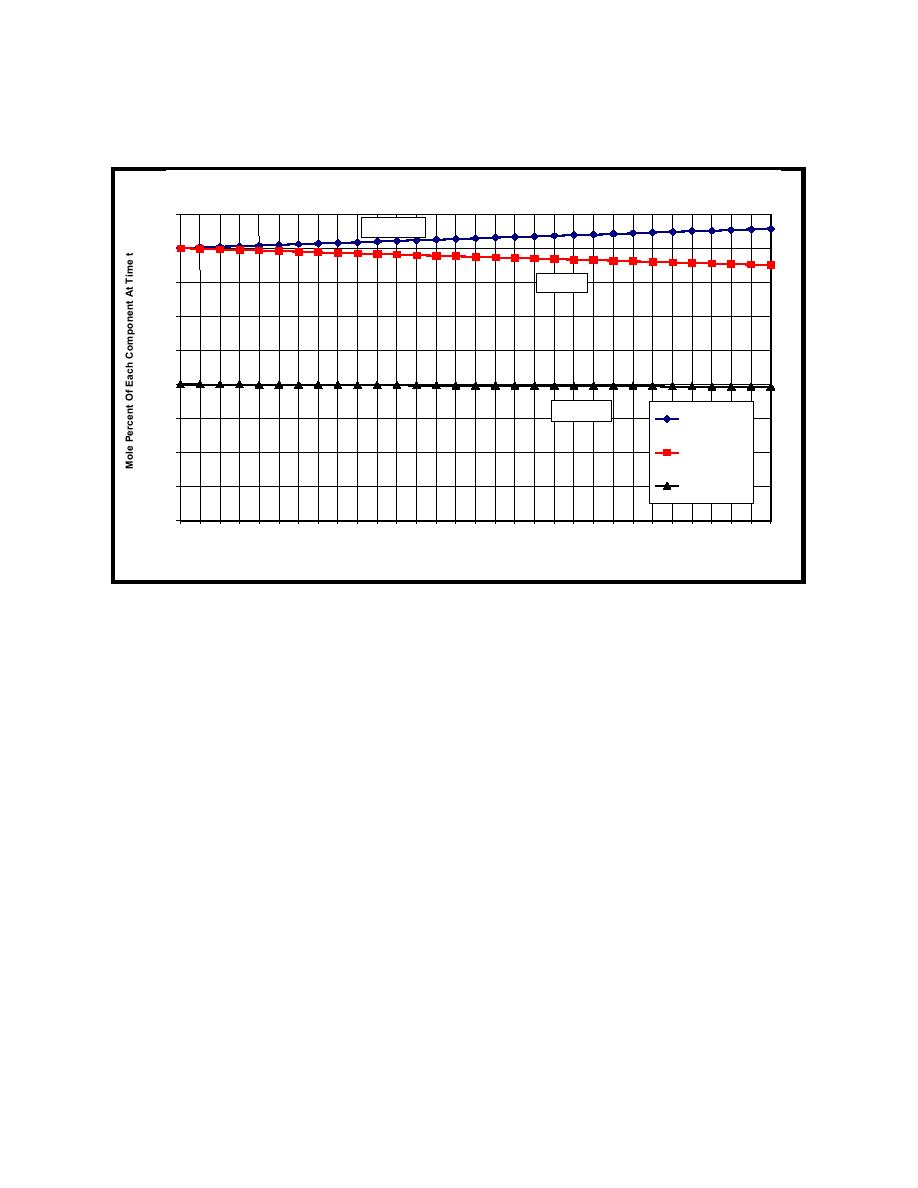 |
|||
|
|
|||
|
Page Title:
Figure C-1. Change in mole percent with time in a mixture of 40% T2, 40% 3He and 20% Ar |
|
||
| ||||||||||
|
|  DOE-HDBK-1129-99
the container and sample change with time. Figure C-1 shows an example of the changing
moles in a gas mixture.
45
m% He3
40
35
m% T2
30
25
20
m% Ar
M%He3At-t
15
M%T2At-t
10
M%ArAt-t
5
0
0
20
40
60
80
100
120
140
160
180
200
220
240
260
280
300
Elapsed Time In Days
FIGURE C-1. Change in mole percent with time in a mixture of 40% T2, 40% 3He and 20% Ar
The total number of moles in the container is known at the time of the sampling but not at the
time of the analysis. If the gas analysis is performed on the same day as the sampling, then,
since the half-life of tritium is 4500.88 days, the error caused by the decay is small (< 0.015
percent for 1 day, approximately 1 percent in 67 days). Some facilities are equipped to perform
the sample analysis within a few minutes or on the same day as the sampling. Others facilities
must depend upon collecting a gas sample, on the sampling date, for analysis at a later date.
The following equations include three significant dates. The Sample Date is the day the gas
sample for analysis is collected, and the pressure, volume, and temperature of the container are
measured and recorded to determine the total moles of gas. The Analysis Date is the date the
gas sample is analyzed to determine the mole percent of tritium per mole in the sample. The
Book Value Date is a date on which the quantity of tritium in the container is known from a
previous assay. Additionally, it assumes a gaseous mixture at the start of 100% tritium and
other stable gases; i.e., it does not contains HT, DT, HTO, or other radioactive or non-inert
gases.
The process steps are as follows:
1. Calculating the number of moles of gas in the container on the Sampling Date.
2. Determining the percent of tritium in the collected sample on the Analysis Date by gas
analysis.
3. Using the two values in steps 1 and 2, the time period, in days, between the two dates and
the half-life of tritium, calculating the number of grams of tritium in the container on the
Sampling Date.
C-7
|
|
Privacy Statement - Press Release - Copyright Information. - Contact Us |